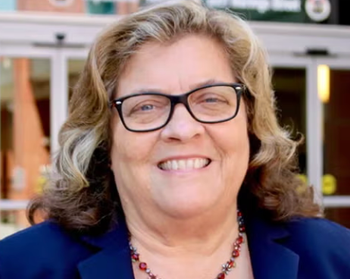
Breast cancer and Black women: Gaps in care and research
There are persistent disparities in outcomes for Black women with breast cancer. Alpa Patel of the American Cancer Society talks about the need to do better.
Even though Black women are less likely to develop breast cancer, they are more likely to die because of it.
The mortality rate for Black women with breast cancer
Part of the mystery is understanding why Black women are more likely to develop more aggressive forms of breast cancer. About one in every 10 breast cancers is considered triple negative breast cancer, and they are the hardest to treat.
“They're not the ones that are driven by estrogen, so we know less about what is driving them,” Patel says.
- Read more:
Breast cancer: Rising cases in younger women
While one in 10 women are diagnosed with triple negative breast cancer, one in five Black women develop such cancers. Patel says it’s unclear if there are genetic factors or environmental factors making Black women more likely to develop triple negative breast cancer.
“We need to understand why that's happening,” she says.
(See part of our conversation in this video. The story continues below.)
Questions of care
The disparities in outcomes also suggest that Black women may not be getting the same quality of care as white patients, Patel says.
Black women tend to get screened for breast cancer at similar rates to other groups, but Patel says that doesn’t answer all the questions.
“While black women tend to be screened at similar rates as white women, the quality of that screening and the follow-up on an abnormal screening mammogram may not be as good,” Patel says. “And so that's some of what we're looking into is, how do we improve the quality of care that black women are receiving?”
“There's also differences in treatment response,” she adds. “So what is it about response to treatment that may differ, that may be leading to these higher death rates?”
It’s critically important for women who have mammograms with abnormal findings to get appointments to see physicians and get more testing as soon as possible. Patel says researchers need more data on how quickly women are getting additional care after their screenings.
“We need to understand, are there drop-offs? Is it taking longer to get to resolution? There's so many things that we have to better learn for all women, but in particular, Black women, that may contribute to those outcomes,” she says.
Black patients have consistently seen worse outcomes across different cancers, and
Needing more research
The American Cancer Society has been working to expand cancer research in Black women. It’s critical to get more Black women participating in studies of breast cancer, Patel says.
“Most of what we have learned about breast cancer we have learned from studies of predominantly white women,” Patel says. “In our own cohorts, we've had over two and a half million Americans involved in our research studies at the American Cancer Society since the 1950s, and over two million of those individuals have been white. So there is a need to increase representation in research.”
Last year, the organization launched the VOICES of Black Women study, with a goal of enrolling 100,000 Black women. So far, more than 5,000 Black women have enrolled.
“It's always a little bit slower to start because there's understandably some skepticism, and lack of awareness and discomfort,” Patel says.
Some Black women find it harder to participate in clinical trials, due to family responsibilities, time commitments, or difficulties in transportation.
But Patel acknowledges that some Black Americans don’t have a lot of trust in the medical establishment, for valid reasons.
“There have been some horrific events historically that have eroded the trust in biomedical research in the black community,” Patel says.
Getting more Black women pursuing careers in medical research can help address those issues.
“Black women want to see themselves represented in those research teams,” Patel says.
With the VOICES project, the scientific advisory board is made up of Black women scientists, and they help contribute to the design and oversight of studies. Black and brown women make up the majority of the internal team and understand the challenges and barriers, Patel says.
Patel sees diversity as an essential part of the solution in closing gaps in outcomes for Black and brown women.
“It's important to focus on the fact that our goal is to end cancer as we know it, for everyone,” Patel says. “And everyone means that we need to engage with populations of all types. And we also recognize that there are trust issues that that we have to address, and we address those through partnership.”








































